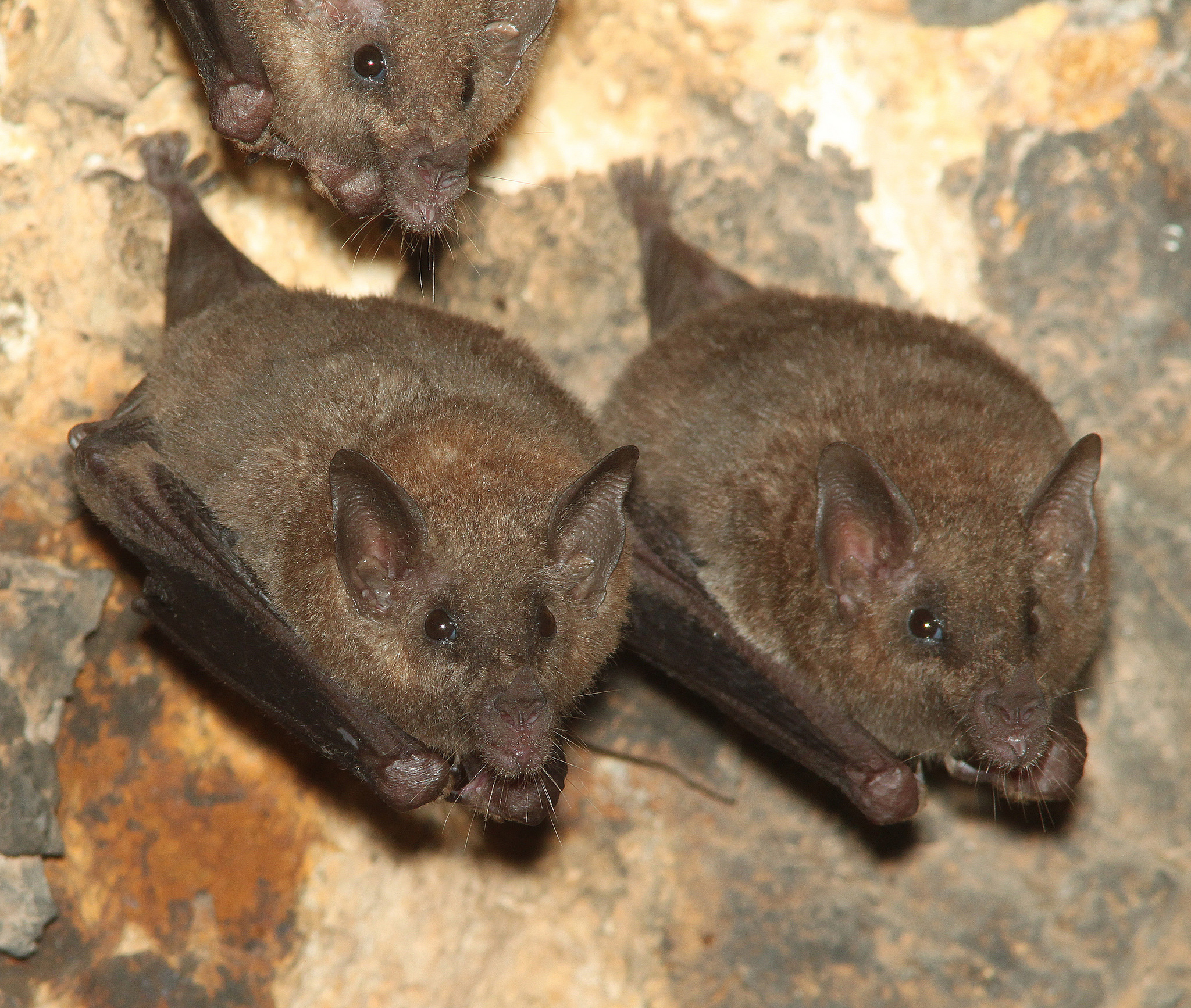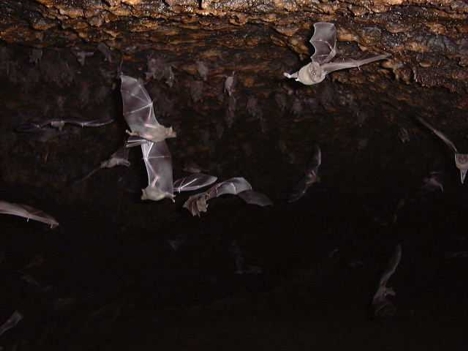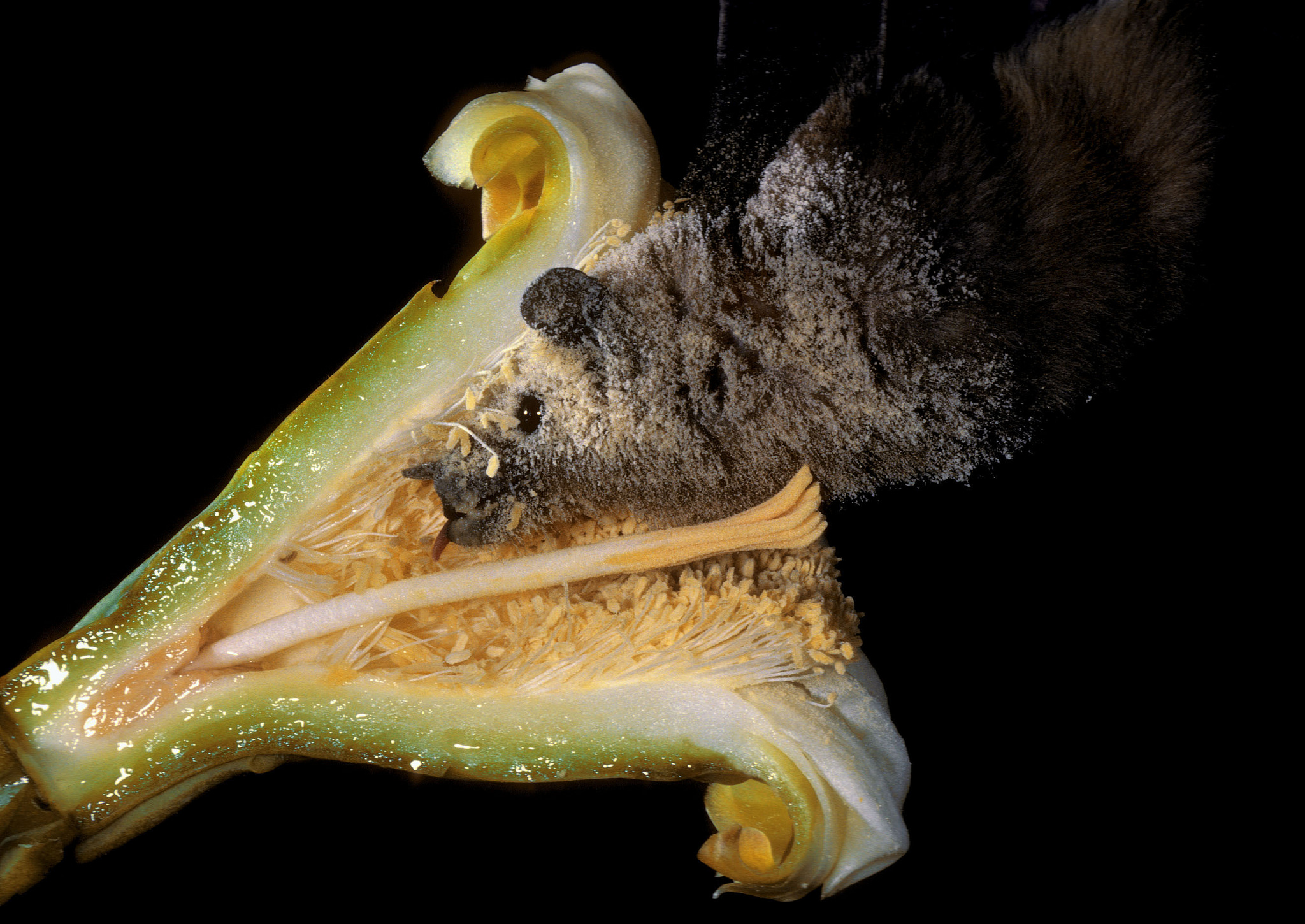Bats, Pollination, and the Sonoran Desert
By Sy Maher
The Sonoran Desert is a place where life is dependent on a balanced ecosystem. Nectarous (nectar eating) bats were made to pollinate cacti. There are two species that pollinate the desert. The Lesser Long-nosed and Mexican long-tongued bat. Of the two, the Lesser Long-nosed bat is on the endangered species list.

Lesser Long-nosed Bats (Leptomycteris curasoae)
The extinction of the Lesser Long-Nosed Bat would create flora problems within the Sonoran Desert. This bat is a huge pollination contributor of cacti and agave. If the bat were not there to pollinate, a very common habitat and food for most of the animals within the Desert would disappear. The Saguaro cactus to name but one. This would lower biodiversity and the ecosystem.

Lesser Long-nosed and bats flyin in a cave.
As one can see, these two bats are almost impossible to tell apart.
![By U.S. Fish and Wildlife Service Headquarters [CC BY 2.0 (http://creativecommons.org/licenses/by/2.0) or Public domain], via Wikimedia Commons](https://luckeybee.com/wp-content/uploads/2017/11/mexican-Choeronycteris_mexicana_Mexican_long-tongued_bat_7371567444.jpg)
Choeronycteris mexicana, Mexican long-tongued bat

Lesser long-nosed bat with pollen-covered hairs
Nectarous bats have long tongues with brush-like tips for lapping up nectar and getting pollen as food. The cacti flowers are bright, and easily seen at night. Saguaro and organ pipe flowers open and send out a scent that is sweet simular to over-ripe fruit. Bats are attracted to the smell. They dig their long snout and tongue into the tube-shaped cactus flower reaching for the sweet nectar. They literally get covered in pollen making it easy to distribute to other plants. They also eat the fruit of cacti. Seeds from fruit pass through their stomachs intact and scatter throughout the dessert.
Both species often takes nectar from hummingbird feeders as well.
Besides messing with the natural balance of the desert, this endangered species is directly responsible for pollinating the agave plant. Can you say Tequila? The next time you sip a margarita or a tequila sunrise, pause for a moment to reflect on the contribution made to the tequila industry by some long unacknowledged friends: long-nosed bats.
According to the Arizona Game & Fish Department, Bats are among the most misunderstood and feared animals. They are constantly disturbed and killed. People’s fears have caused them to poison bats and destroy roost sites (resting areas during the daylight hours) and maternity colonies. All of these things have led to the decline of many bats. But the greatest threat
to the endangered species is agave harvesting. The growing demand for agave for food, liquor, and landscaping plants has left fewer agave flowers for long-nosed bats.
Sources
http://www.batcon.org/resources/media-education/bats-magazine/bat_article/299https://www.desertmuseum.org/books/nhsd_bats.phphttps://www.nps.gov/sagu/learn/nature/nectivorous-bats.htmhttps://www.fs.fed.us/wildflowers/pollinators/pollinator-of-the-month/mexican-long-tongued-bat.shtmlhttps://www.nps.gov/sagu/learn/nature/nectivorous-bats.htm
https://www.azgfd.gov/i_e/ee/resources/wild_kids/proctectwl46.pdf
Photos
Cover CC Supplied By U.S. Fish and Wildlife Service Headquarters
By U.S. Fish and Wildlife Service Headquarters [CC BY 2.0 (http://creativecommons.org/licenses/by/2.0) or Public domain], via Wikimedia Commons
By USFWS – http://digitalmedia.fws.gov/cdm4/item_viewer.php?CISOROOT=/natdiglib&CISOPTR=5672&CISOBOX=1&REC=1, Public Domain, https://commons.wikimedia.org/w/index.php?curid=16224829
ALAN SCHMIERER Follow LESSER LONG-NOSED BATS (Leptomycteris curasoae) (7-28-12) 0.2 mile cliffs, patagonia-san rafael rd, scc, az -01

![By Scott Bauer, USDA ARS [Public domain], via Wikimedia Commons](https://luckeybee.com/wp-content/uploads/2017/11/Blue_orchard_bee_pollinates_Zinnia-300x204.jpg)
